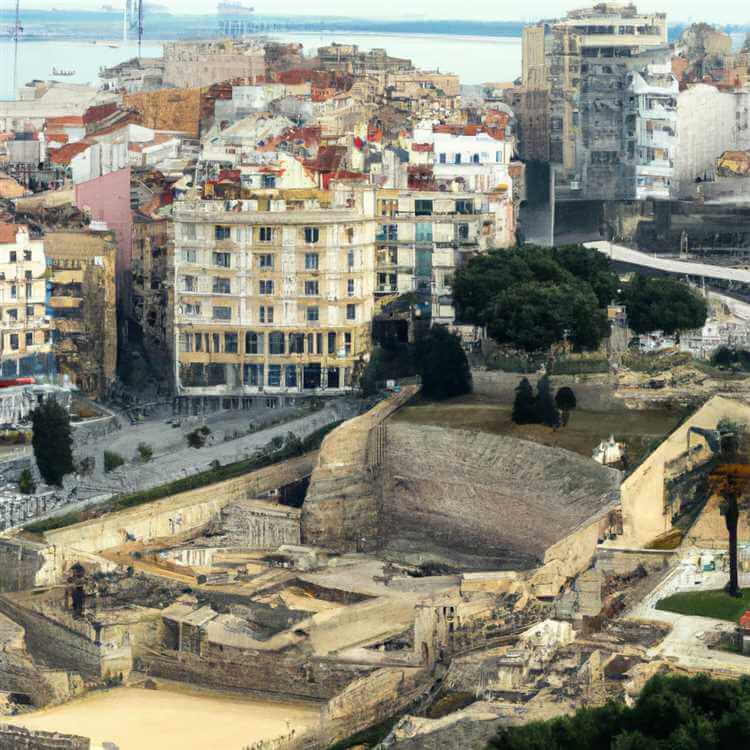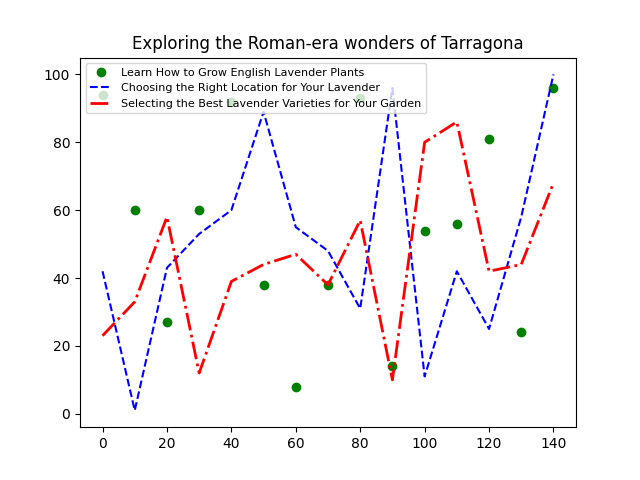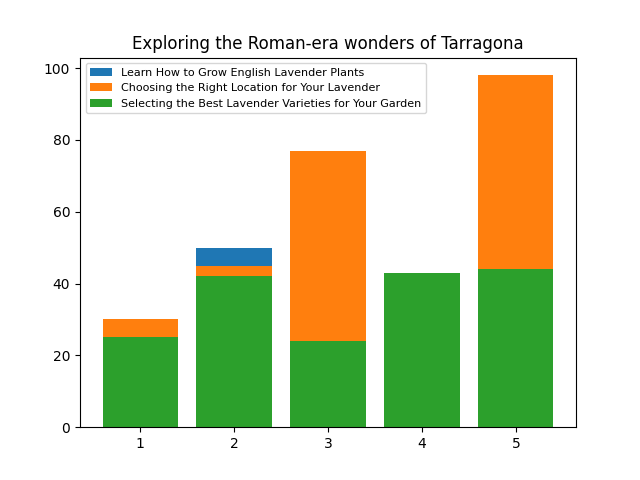Tarragona is a city located on the eastern coast of Spain, in the region of Catalonia. With a rich history dating back to ancient times, Tarragona is known for its impressive Roman remains, which have earned it the title of UNESCO World Heritage Site.
During the Roman era, Tarragona was an important city in the province of Hispania Tarraconensis. It served as the capital of the province and played a crucial role in the Roman conquest of the Iberian Peninsula. The city was known as Tarraco and was one of the most important Roman cities in the western Mediterranean.
The Roman presence in Tarragona is still evident today, with numerous well-preserved ruins scattered throughout the city. One of the most iconic structures is the Tarragona Amphitheatre, which was built in the 2nd century AD and could accommodate up to 14,000 spectators. It was used for gladiatorial contests and other public spectacles.
Another notable Roman monument in Tarragona is the Tarragona Cathedral, which was constructed on the site of an ancient Roman temple. The cathedral is a fascinating blend of Romanesque and Gothic styles and is a testament to the city’s rich architectural heritage.
In addition to its Roman ruins, Tarragona offers visitors a wealth of other attractions. The city boasts beautiful sandy beaches, a charming Old Town with narrow streets and historic buildings, and a vibrant cultural scene. Whether you’re interested in history, architecture, or simply enjoying the Mediterranean atmosphere, Tarragona is a must-visit destination.
PortAventura, a day of adrenalin and fun
If you’re looking for an adventure-packed day full of adrenaline and fun, look no further than PortAventura. Located in Tarragona, Spain, PortAventura is a world-renowned theme park that offers a wide range of thrilling rides, spectacular shows, and exciting attractions for visitors of all ages.
One of the main highlights of PortAventura is its thrilling roller coasters. From the awe-inspiring Dragon Khan to the stomach-churning Shambhala, these roller coasters are sure to get your heart racing. For those seeking even more adrenaline, the park also has a variety of thrill rides such as the Hurakan Condor, a free-fall attraction that will leave you breathless.
In addition to the adrenaline-pumping rides, PortAventura offers a range of family-friendly attractions. From the colorful Sesame Street area to the interactive SésamoAventura land, there is something for everyone to enjoy. Younger visitors can also meet their favorite characters, such as Elmo and Cookie Monster, for an unforgettable experience.
When you need a break from all the excitement, be sure to catch one of PortAventura’s spectacular shows. From the mesmerizing acrobatics of “FiestAventura” to the high-energy performances of “The Beat of Polynesia,” these shows are not to be missed. They provide the perfect opportunity to relax and be entertained.
To make the most of your visit, be sure to plan ahead. PortAventura offers various ticket options, including express passes that allow you to skip the lines and make the most of your day. Additionally, the park features a variety of dining options, ranging from quick-service restaurants to fine dining experiences.
So if you’re looking for a day full of adrenalin and fun, PortAventura is the perfect destination. With its thrilling rides, family-friendly attractions, and spectacular shows, there is something for everyone to enjoy. Don’t miss out on the opportunity to create unforgettable memories at this world-class theme park.
The Cistercian monastery route
The Cistercian monastery route in Tarragona is a journey into the past, allowing visitors to explore the rich history and culture of the Cistercian order. Located in the picturesque countryside surrounding Tarragona, this route takes you to three magnificent monasteries that were built during the medieval period.
The first stop on the route is the Poblet Monastery, one of the most important Cistercian monasteries in Spain. Founded in the 12th century, it is a remarkable example of Gothic architecture and is now a UNESCO World Heritage Site. Visitors can explore the stunning cloister, the royal pantheon, and the beautiful church.
The second monastery on the route is the Santes Creus Monastery, another impressive example of Cistercian architecture. Built in the 12th century, it features a mix of Romanesque and Gothic styles, creating a unique and captivating atmosphere. The monastery also houses a museum where visitors can learn more about the history of the Cistercian order and its impact on the region.
The final stop on the route is the Vallbona de les Monges Monastery, located in the village of the same name. This monastery, founded in the 12th century, is known for its serene and peaceful atmosphere. Visitors can explore the monastery’s church, cloister, and gardens, and learn about the daily life of the Cistercian nuns who still reside there.
Exploring the Cistercian monastery route is a truly immersive experience, allowing visitors to step back in time and learn about the influential role of the Cistercian order in the region’s history. Whether you are interested in architecture, history, or simply enjoying the tranquility of these sacred spaces, this route is a must-visit in Tarragona.
Dalí’s Triangle
If you already find yourself in Tarragona, you might want to take a day trip to explore the Dalí Triangle. This fascinating route takes you through three different locations that were significant in the life and work of the renowned Spanish artist, Salvador Dalí.
Figueres
The first stop on the Dalí Triangle is Figueres, a small town located about an hour away from Tarragona. This is where you’ll find the famous Dalí Theatre-Museum, which was designed by Dalí himself. The museum is a surreal masterpiece, showcasing a wide range of Dalí’s works, including paintings, sculptures, and installations. It’s a must-visit for any art enthusiast or Dalí fan.
Cadaqués
Next on the itinerary is Cadaqués, a picturesque coastal town that served as a source of inspiration for many of Dalí’s paintings. The town’s unique charm and picturesque landscapes attracted Dalí, who lived in a house here for a significant part of his life. Visitors can explore the Dalí House-Museum, which showcases the artist’s personal belongings and provides insight into his life and artistic process. Cadaqués also offers stunning beaches and delicious seafood, making it a great place to relax and soak up the Mediterranean atmosphere.
Another notable attraction in Cadaqués is the Portlligat House-Museum, which was Dalí’s primary residence and studio for many years. This unique museum allows visitors to step into Dalí’s private world and see where he lived and worked. The museum perfectly reflects the artist’s eccentric personality and creative genius.
Púbol
The last stop on the Dalí Triangle is Púbol, a small village where Dalí purchased a castle for his wife, Gala. The Gala Dalí Castle-Museum is dedicated to Gala and showcases her personal effects, as well as some of Dalí’s artwork. The castle itself is a fascinating example of medieval architecture, and wandering through its rooms is like stepping back in time.
Visiting the Dalí Triangle is a unique opportunity to immerse yourself in the world of one of the 20th century’s most influential artists. From the surreal beauty of the Dalí Theatre-Museum to the enchanting landscapes of Cadaqués and the historic charm of the Gala Dalí Castle-Museum, this artistic journey is sure to leave you inspired and captivated.
Mediterranean beaches and coves
Tarragona is not only known for its rich Roman history, but also for its stunning Mediterranean beaches and coves. Located on the Costa Dorada, Tarragona offers visitors a chance to relax and enjoy the beauty of the sea.
Sandy beaches
With its golden sand and crystal clear waters, Tarragona’s beaches are a true paradise for sunbathers and beachgoers. The main beach, known as Playa del Milagro, stretches for several kilometers and is lined with palm trees and beach bars. It’s the perfect spot to lay down a towel, soak up the sun, and take a refreshing dip in the turquoise waters of the Mediterranean.
Secluded coves
For those seeking a more secluded and intimate beach experience, Tarragona offers a number of picturesque coves. One of the most famous is Cala Fonda, also known as Waikiki Beach, which is surrounded by cliffs and accessible only by foot. Its pristine waters and untouched natural surroundings make it a favorite spot for nature lovers and adventurers.
Other popular coves include Cala Romana, a small sandy beach nestled between cliffs, and Cala Jovera, a hidden gem with crystal clear waters and stunning rock formations.
Whether you prefer a lively beach with all amenities or a hidden cove away from the crowds, Tarragona has something for everyone. So don’t forget your sunscreen and get ready to relax and enjoy the Mediterranean beauty of Tarragona’s beaches.
Romanesque sites in the Vall de Boí
The Vall de Boí is a valley located in the Pyrenees mountains in northern Spain. It is known for its exceptional concentration of Romanesque art and architecture, which has been recognized as a UNESCO World Heritage Site since 2000. The valley is home to nine churches that were constructed between the 11th and 12th centuries, showcasing the unique Romanesque style.
These churches are beautiful examples of the architectural and artistic achievements of the Romanesque period. Each church features intricate sculptures, vibrant frescoes, and exceptional architectural details. The churches are typically constructed with local stone and have a rectangular floor plan with a single nave and apse.
One of the most famous churches in the Vall de Boí is the Church of Sant Climent in Taüll. It is renowned for its frescoes, particularly the depiction of Christ in Majesty on the apse’s triumphal arch. The church also features a beautiful bell tower, which is a characteristic element of Romanesque architecture in the Vall de Boí.
Another notable church in the valley is the Church of Santa Maria in Taüll. It is known for its stunning paintings that depict scenes from the Bible, including the Last Judgment and the Crucifixion. The church also has a remarkable bell tower, adorned with decorative motifs that are typical of the Romanesque style.
The other churches in the Vall de Boí – Sant Joan de Boí, Santa Eulàlia d’Erill la Vall, Sant Feliu de Barruera, La Nativitat de Durro, Santa Maria de Cardet, and Sant Quirc de Durro – are equally impressive and worth visiting for their unique architectural features and artistic treasures.
| Church | Location | Features |
|---|---|---|
| Church of Sant Climent | Taüll | Frescoes, bell tower |
| Church of Santa Maria | Taüll | Paintings, bell tower |
| Sant Joan de Boí | Boí | Artistic details |
| Santa Eulàlia d’Erill la Vall | Erill la Vall | Architectural details |
| Sant Feliu de Barruera | Barruera | Artistic elements |
| La Nativitat de Durro | Durro | Decorative motifs |
| Santa Maria de Cardet | Cardet | Unique architecture |
| Sant Quirc de Durro | Durro | Architectural details |
Visiting the Romanesque sites in the Vall de Boí is like stepping back in time to the medieval era. The churches are a testament to the rich cultural and artistic heritage of the region and are a must-see for history and architecture enthusiasts.








